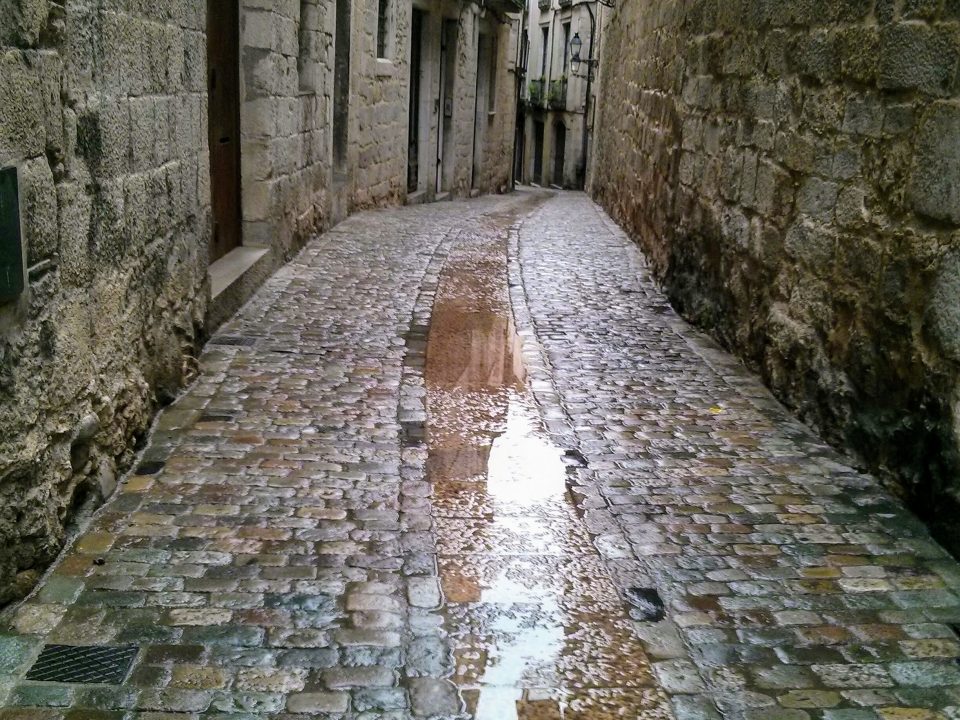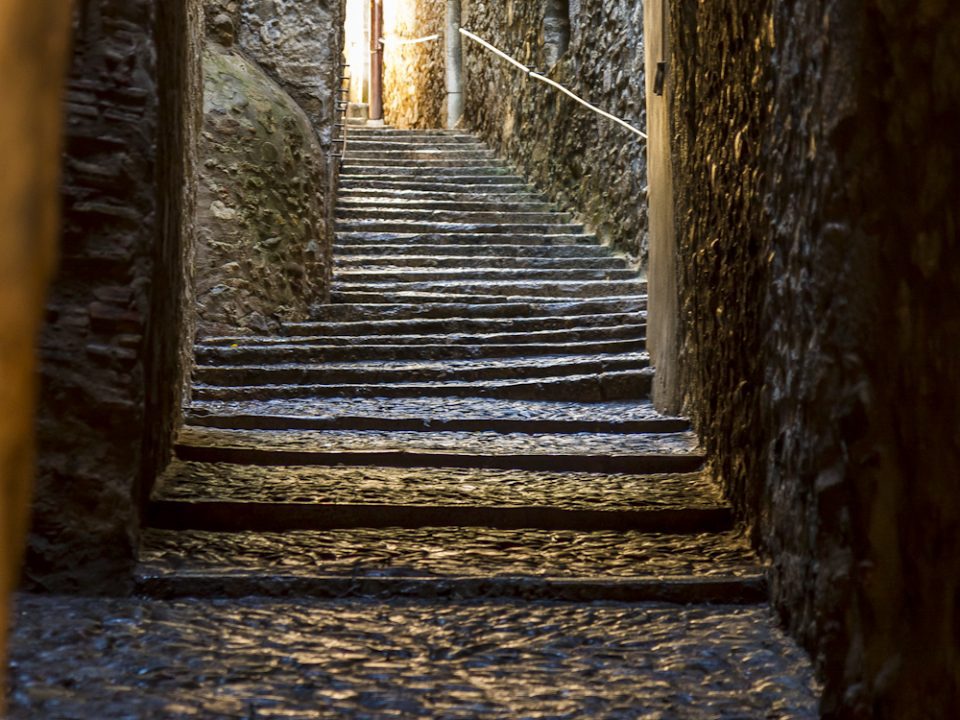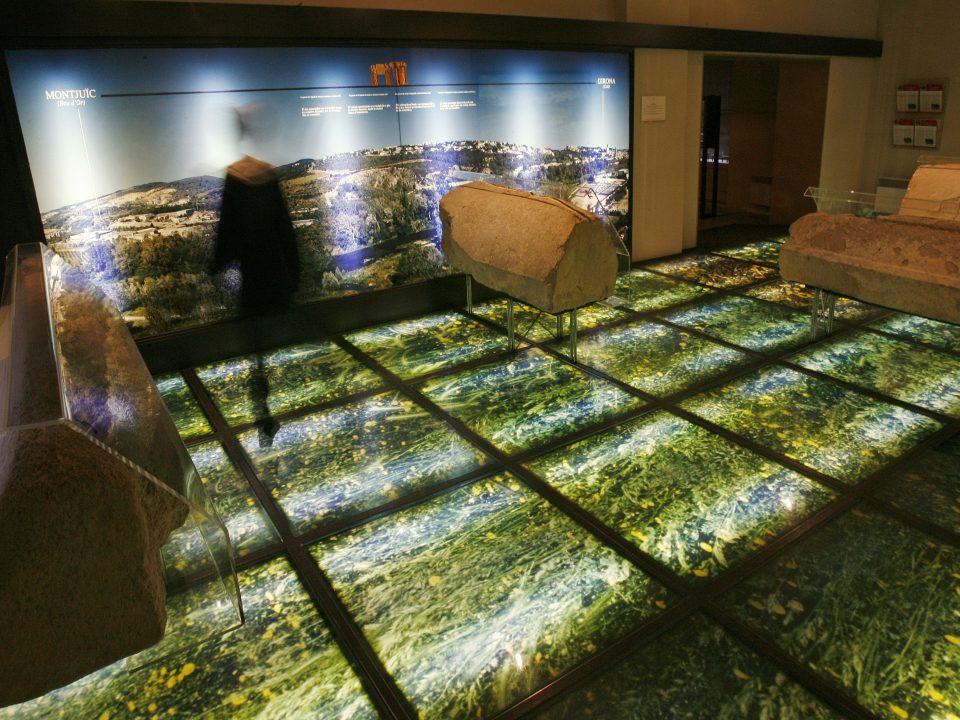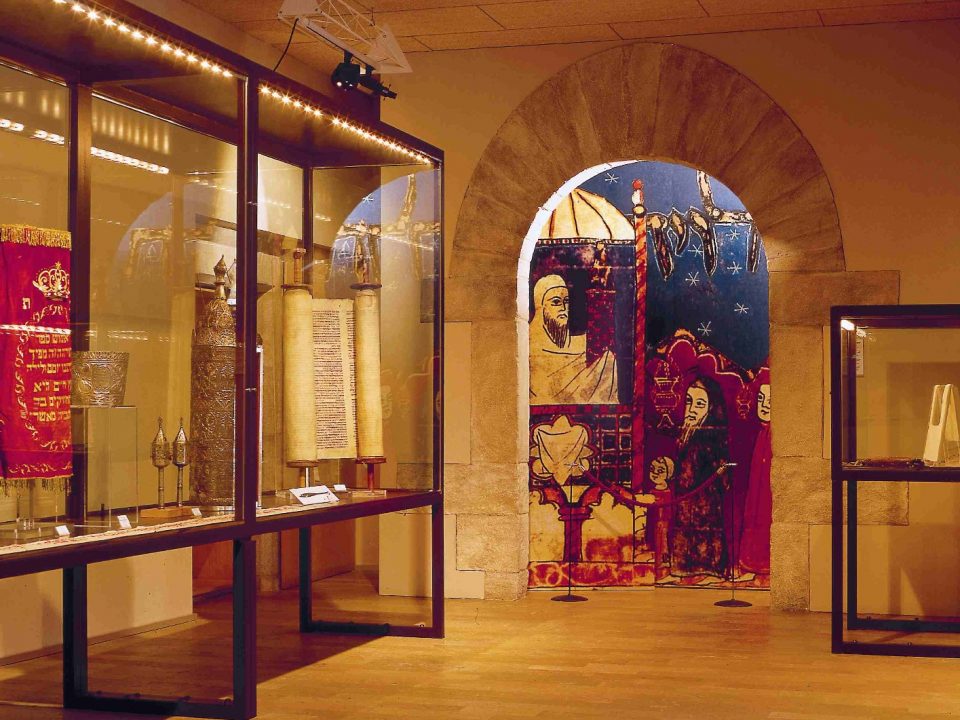A few metres on from Força street, departing from the Square of the Cathedral, on the right there is the Institut Vell Square. Here, a hole for the mezuzah, one of the distinguishing features identifying the Jewish houses, can still today be seen on one of the stones of the door of the house number 33. The mezuzah is a rolled parchment which contains a Jewish prayer. In this square there is also the access to the City History Archives, which preserve important documents related with the history of the Jewish community.
Along with Sant Llorenç street, undoubtedly forms the most charming area of the whole call (medieval Jewish quarter). At the crossroads of Cúdaro and Claveria streets with Pujada de la Catedral (the Pera steps), there stood one of the large wooden gates which, in the event of danger, closed and confined the call of Girona. Along with the streets of Sant Llorenç and Hernández (the latter closed at both ends), they connect the upper limit of the Jewish (Claveri¬a and Doctor Oliva i Prat streets) with Força street.
The main thoroughfare of the medieval city and the call (medieval Jewish quarter), also corresponds to the Roman cardus and via Augusta and it takes its name from the fortress which Girona represents. In 1373 it already was the centre of the call, known as Carrer Major del Call On its Western side the call opened out into narrow, steep streets like that of Lluis Batlle street, ancient Synagogue street, Hernández street or Cúndaro street, or the upper stretch of Força street which received the street name Carrer Major del Call Judaic or Mercadell since a medieval market was located at the end of it. At the end of the 14th century this street was declared by the Christian authorities to be a forbidden space to Jews and was renamed Sant Llorenç street.
One of the most emblematic streets in Girona and centre of the call (medieval Jewish quarter) in the 15th century. At the same entrance of Sant Llorenç street from Força street, it is still possible to locate the hinges of the old gate which kept these steps closed until 1975. In the middle of its steep steps was the gate which led , via an access of courtyards and porches, to the building which housed the last Synagogue in the 15th century, today part of the Museum of Jewish History.
Documents tell us we that the Jewish cemetery already existed in the 13th century in the mountain named Montjuic, in the north of the city, between two streams, in the middle of the current districts of Pedret and Pont Major. In the late 19th century, due to the construction of the railway line which had to link Girona to the French border, the first gravestones with Jewish inscriptions appeared. The Museum of Jewish History displays a unique collection of Hebrew gravestones dated back to the 12th and 15th centuries, from the cemetery of Montjuic and recovered from different places of the city since the 19th century.
A few metres on from Força street, departing from the Square of the Cathedral, on the right there is the Institut Vell Square. Here, a hole for the mezuzah, one of the distinguishing features identifying the Jewish houses, can still today be seen on one of the stones of the door of the house number 33. The mezuzah is a rolled parchment which contains a Jewish prayer. In this square there is also the access to the City History Archives, which preserve important documents related with the history of the Jewish community.
The Museum presents the history of the Jewish community of Girona in the middle ages. Eleven galleries form an itinerary to lead visitors through topics such the arrival of the Jewish People in Catalonia, the physical evolution of the call (medieval Jewish quarter), rituals and traditions, the synagogue, the Jewish cemetery, Nahmanides, the cultural and scientific activity of the Catalan Jews, the difficult relations among the Jewish and Christian communities towards Inquisition and the material heritage. The Museum counts on temporary exhibition rooms at the ground floor. The second floor opens to the patio of the Star of David, where the archaeological remains of the 15th century mikwe (ritual bath) are located. The third floor houses the Nahmanides Institute for Jewish Studies and Judaica Library.






